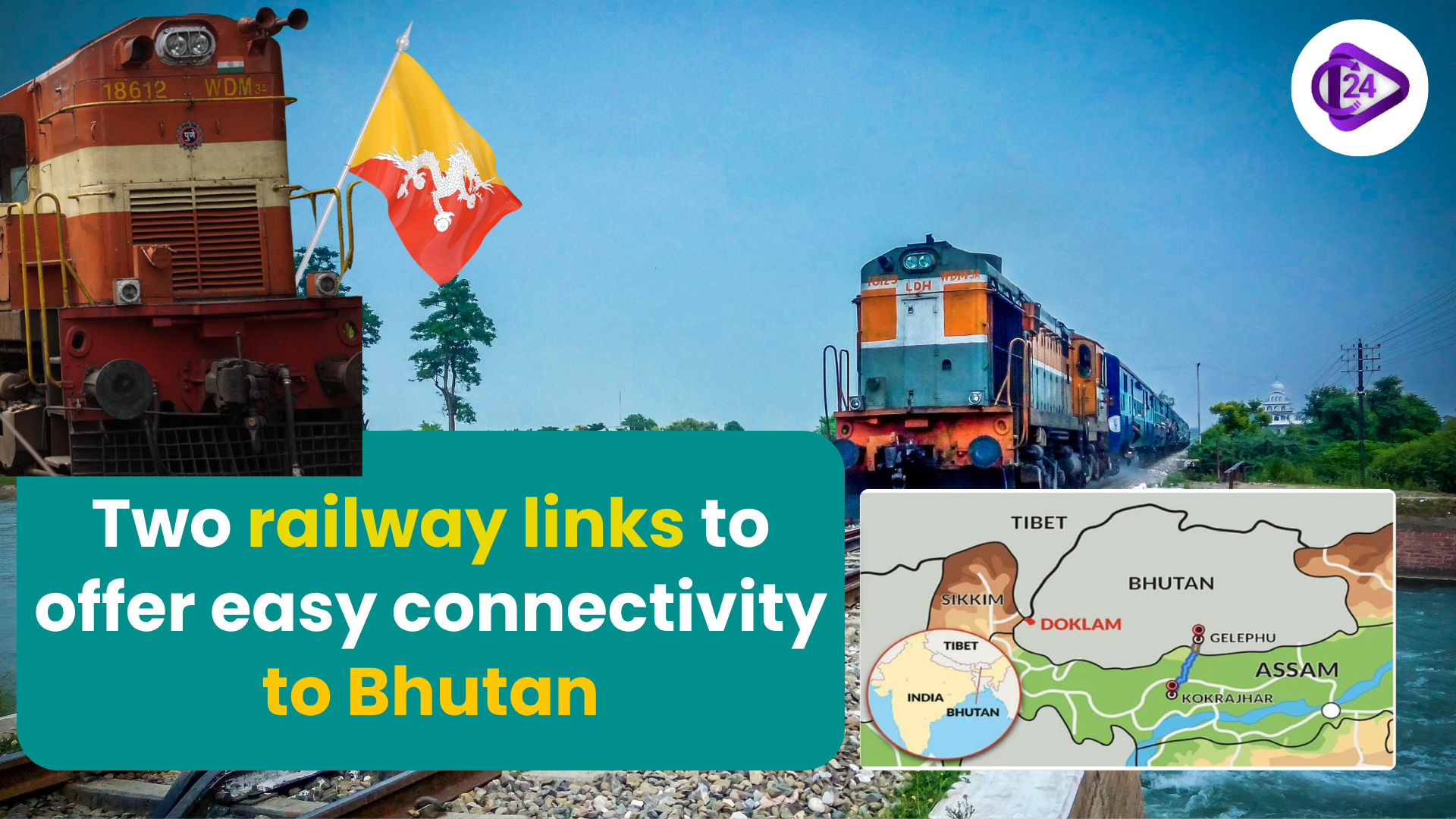
India and Bhutan have unanimously accepted their first-ever rail link project, a historic move towards enhanced bilateral relations. The project consists of two tracks, Kokrajhar to Gelephu and Banarhat to Samtse, at an estimated cost of 4,033 crore. When it is finished, Bhutan will get direct rail connectivity for the first time, which enhances trade, tourism, and regional cooperation. The project will improve mobility across the borders, decrease the cost of transportation, help Bhutan achieve its development agenda, and strengthen India's position as a reliable partner in the growth and connectivity in the region. This is a sign of a common vision of closer economic and cultural ties between the two countries.
Geopolitics Impact of Bilateral Relations, Key Facts
-
Relations bilaterally: Stability of drive, commerce, connectivity, trust.
-
Regional power and enhance security.
-
The major cooperation: Energy, defense, culture, and technology.
-
Strategic purpose: Minimise reliance on enemy powers.
-
Stability: Advanced economic and political stability.
Other Key Facts of the Rail Link Project
-
The Kokrajhar-Gelephu and Banarhat-Samtse railways are the first railroads in India-Bhutan.
-
Estimated investment: about 4033 Crore.
-
Kokrajhar-Gelephu road: almost 70km, consists of 6 outposts and approximately 100 bridges.
-
BanarhatSamtse highway: approximately 20 km and 2 stations, and 25 bridges.
-
Gelephu is named the city of the future of Bhutan, Mindfulness City.
-
The Kokrajhar-Gelephu corridor is considered a Special Railway Project.
Bilateral Energy Cooperation and Regional Integration
-
Chukha (336 MW, 1988): First mega joint project, the basis of cooperation.
-
Kurichhu (60 MW, 2001): The power and export of eastern Bhutan.
-
Tala (1,020 MW, 2007): Large supplier to India, increases revenues.
-
Mangdechhu (720 MW, 2019): Groundbreaking project, improves bilateral energy relationship.
-
Punatsangchhu-I (1,200 MW): Being built, delayed.
-
Punatsangchhu-II (1,020 MW): Coming to completion, will increase exports.
-
Kholongchhu (600 MW): A Joint venture is underway with the 10,000 MW plan.
Conclusion
The recently granted approval of the first rail projects in India and Bhutan is witnessing a historic move of enhancing regional cooperation and connectivity. The Kokrajhar-Gelephu and Banarhat-Samtse lines will not only connect Bhutan with the expansive Indian rail system but will also enhance trade, tourism, and cultural connections. The vision of the Gelephu “Mindfulness City can also add to the significance of the project. The Kokrajhar line is a Special Railway Project by declaring it as such and its strategic importance is emphasized. Combined, these efforts will ensure improved bilateral relations and economic growth in both countries in the long term.



 Netflix to buy Warner Bros Discovery's Studios, Streaming Unit for $72 Billion
Netflix to buy Warner Bros Discovery's Studios, Streaming Unit for $72 Billion Russia to Join India-led International Big Cat Alliance
Russia to Join India-led International Big Cat Alliance India, Maldives Begin 14th Edition of Exercise Ekuverin 2025
India, Maldives Begin 14th Edition of Exercise Ekuverin 2025 World AIDS Day 2025
World AIDS Day 2025 Riyadh Metro Breaks Guinness World Record as Longest Driverless Metro Network
Riyadh Metro Breaks Guinness World Record as Longest Driverless Metro Network Vietnamese Film ‘Skin of Youth’ Bags Golden Peacock Award
Vietnamese Film ‘Skin of Youth’ Bags Golden Peacock Award India Launches Operation Sagar Bandhu to Support Sri Lanka After Cyclone Ditwah
India Launches Operation Sagar Bandhu to Support Sri Lanka After Cyclone Ditwah Jakarta Becomes World’s Most Populous City In 2025
Jakarta Becomes World’s Most Populous City In 2025 G20 Summit 2025 Overview: Theme, Venue Countries and Goals Explained
G20 Summit 2025 Overview: Theme, Venue Countries and Goals Explained Hayli Gubbi Eruption Raises Regional Alert Across Ethiopia and Neighbouring Nations
Hayli Gubbi Eruption Raises Regional Alert Across Ethiopia and Neighbouring Nations






